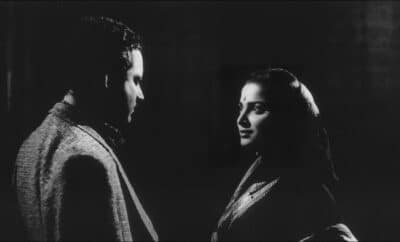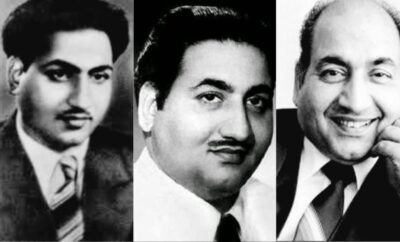Collections
Vidushi Zarin Daruwala Sharma – String It On
Sarod, one of the most popular and prominent stringed instruments along with the sitar. Sarod roughly means ‘beautiful sound’ or ‘melody’ in Persian. It belongs to the Lute family and has been derived from the Rabab. Sarod is mostly seen as a supportive instrument. Providing a background to the main melody and adding to the stability of the harmony. Sometimes it also provides a firm harmonic base to the music with its continuous or periodic sounding of one or more notes. The sound created by Sarod resonates deeply. Hence it is often related to reverberant, introspective, meditative music. Its ability to produce the continuous notes (Meend), makes it an integral part of Indian Classical music. From a belief in the ancient times of Sarod being a combination of Chitraveena, Rabab and Sursingar to becoming a modern day instrument, Sarod has evolved beautifully. Though Sarod is much smaller than the Sitar, it is considered on the heavy side. Made with wood, goat skin and strings (steel or bronze), it needs a lot of effort to place it on the lap and pluck the strings with a plectrum (usually made of coconut shell). Lot of strength is required to hold it in its place, making it an instrument played mostly by the male artists rather than female. There are very few, almost negligible female exponents of Sarod. Sharan Rani Mathur (Backliwal) is considered as the first female exponent of Sarod. When she went to Ustad Ali Akbar Khan to learn this instrument, he openly discouraged her saying – This is a heavy instrument and will need a lot of strength, you being a vegetarian won’t be able to play it. You should either learn singing or Sitar. To this Sharan Rani answered – You marry the one you love! And from being Sharan Rani to becoming Sarod Rani, she mastered this heavy instrument. Another name which readily comes to the mind when we say female exponents of Sarod, is Zarin Daruwala Sharma. An outstanding Sarod player, she was a skilled classical musician but what set her apart from the rest of her counterparts is that she also played Sarod on the tracks of several Hindi film songs.
Born on 9th October 1946, in a Parsi family, Zarin Daruwala began her musical journey by learning Harmonium at the age of 4 and not Sarod surprisingly. Her father, Sorabji Dinshawji Daruwala, who served in the police, had an inclination towards Indian Classical music but couldn’t learn due to his orthodox father. Zarin Daruwala’s mother was a piano player. Thus music was deep rooted in her blood.
At the age of 6 she gave her first solo harmonium performance at the Sur Singar Samsad in 1952.
That same night there was a jugalbandi performance of Ustad Ali Akbar Khan and Pandit Ravi Shankar. After witnessing their performance, her father casually asked her about the choice of her instrument and she readily chose Sarod. She was learning Classical singing from Pandit Laxmanprasad Jaipurwaale at that time who suggested that she should not venture into classical singing as her voice wasn’t suitable for it. It was better to learn an instrument instead. But she was too young to learn Sarod or even hold it. So they decided to wait till she was 10 years old. Zarin Daruwala was given her first Sarod on her 10th birthday as a gift from her father. Thus began the wonderful journey of a Sarod artist.
She not only ruled the Indian Classical Sarod scenario but also Hindi film music containing Sarod pieces. Though her official entry in Hindi film music was Chitralekha (1964), she had an initial tryst with the film music recordings in 1960 when she was only 14 years old, for Masoom.
Apart from her training under the baton of Pandit Haripada Ghosh, Pandit SCR Bhat, Pandit V G Jog, she mastered the strings by listening to the records of Pandit Ravi Shankar and Ustad Ali Akbar Khan. She knew all the notes in those records by heart. She felt that Sarod did not get the recognition as the Sitar in those days and wanted to bring Sarod at par with Sitar.
Her next film was after 4 years, her official entry, Chitralekha (1964). Zarin Daruwala was 18 years old but Sarod looked bigger than her. Music director Roshan wanted a Sarod player for the Sitar-Sarod jugalbandi in the title music of Chitralekha. Zarin Daruwala’s name was put forth to Roshan by Imrat Khan who was already playing for Roshan in those days. Roshan was impressed by her skills and soon the word spread amongst the musicians about this female Sarod player. The musicians did not know her name then and she came to be known as ‘That Parsi Girl’.
She enjoyed playing Sarod for film music, songs as well as the background. Soon she became an integral part of the team and started playing under all the leading music directors. Kalyanji Anandji, Vasant Desai, Madan Mohan, Laxmikant Pyarelal, Jaidev etc.
She went on to say on records that Shankar Jaikishan were her favourite music directors and that she was eagerly waiting to get a call from them for a recording. She finally did get a call and they made marvellous songs together.
She also had a special connection with the Burmans. Though she worked less with the senior Burman, she was impressed by the way he conducted himself during the recordings or otherwise. Her first song with S D Burman was from Talaash (1970) and then a few other films including Mili (1975).
When R D Burman was at the helm of the recordings, Zarin Daruwala loved it because he gave the freedom of playing an instrument to all the artists individually. She called him an egoless music director. A Sarod player himself, R D Burman knew the nuances of this instrument thoroughly.
She also played Sarod for the Bangla version of Ae ri pawan, Bendhechhi beena from Kalankini Kankabati (1981). The song begins with a drop dead gorgeous Sarod piece.
Zarin Daruwala was particularly fond of music directors Khayyam and Ravindra Jain. Both were very particular about every note in the song and wanted it to be played as told.
https://youtu.be/sVuxESeKWjA
Married to Pandit Ashok Sharma, a Sitarist and son of renowned music director Bhagatram of Husnlal-Bhagatram duo, Zarin Daruwala Sharma was conferred with Sangeet Natak Academy award in 1988 and Dadasaheb Phalke Academy award 2007.
She has openly said that playing an instrument in a film song was more difficult for a musician. There is a display of different instruments in a film song, all in bits and pieces, but the execution of that particular piece and in the given time was a special challenge and the piece had to be perfect. She mastered the Sarod and skillfully played it. She was the only female Sarod player in the field dominated by men, in the Classical as well as film music world. Zarin Daruwala loved challenges. Though she looked fragile she was a strong lady and must have crossed all the hurdles with the attitude of – String (bring) it on!




Joy Christie
October 9, 2022 at 10:10 am
As always the articles and write ups of various music and literature personalities The Songpedia has always come up with the finest articles. Today being Respected Zarine ji@s Birth Anniversary, The detailed write up is immensely informative and very well written with the finest songs of Sarod played by Zarine ji.
Pingback: Carnival of Blogs on Golden Era of Hindi Film Music – Volume X – October 2022 Edition – The world is too small? or Is it?
Pingback: Sarodia Zarin Daruwala Sharma and Film Music – Trivia